Mustard is one of the most popular sauces in the world and a constant companion to ketchup and mayonnaise when it comes to sandwiches, meat and various salads. As a rule, mustard is a spice that is made from powdered seeds of mustard with the addition of vinegar, salt, water and oil.
This sauce has a yellowish to brownish color and different textures (smooth, grainy and caviar- like) depending on the type of mustard seeds and mustard species itself. Typical of mustard is a sharp, mild or strong pungent taste that dulls easily combined with other products - bread, meat, vegetables, etc.
Mustard seeds are three types - black, brown and yellow. Traditionally, black mustard is used in Indian cuisine and brown and yellow are most commonly consumed in Europe. Yellow or white mustard seeds have a sharp flavor, brown and black varieties’ taste burns up nose, eyes and even forehead.
Its intense flavor often triggers gastronomic droplets of sweat. As a result, soft mustard is made mostly of white seeds, while strong and acute, of the darker types.
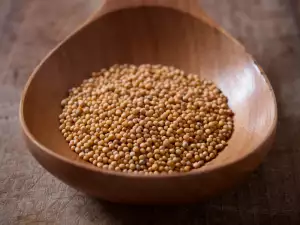
Often mustard is prepared by mixing different types of mustard seeds, the taste is balanced with water, salt, vinegar and oil. In some types of mustard, mostly cheaper ones, they often add starch to give it a thick consistency, which can be described as a bad practice.
"Brassicaceae", belongs to the mustard family and is known to man since 3000 years ago, it has dark green edible leaves and reaches a height of about 70-80 cm tall. Mustard leaves have a pleasant smell of pepper, while the bright yellow flowers smell the distinctive odor of horseradish. Horseradish inherently grows only in Europe.
The French do not distinguish between the plant itself and mustard sauce, which is a common word - moutarde (turnip, mustard). In England, mustard sauce known as mustard etymology of the word probably comes from the Romans who mixed unfermented grape juice (must) with ground mustard seed and called it "Burning must" called "mustum ardens", from which the name "mustard" comes.
History of mustard
Production of mustard swirls in full force almost continuously since 3000 years BC, traditionally being part of Indian cuisine and although mustard was known in ancient Rome and by the Hellas, it had not enjoyed great popularity. The first recipe for mustard appeared in '42 BC and Gauls proved to be its culinary innovators. Over time, they made mustard more popular, up to the 9th century, when its production was a major source of income for the monasteries in France.
As for the famous Dijon mustard, history tells how Pope John XXII (1249-1334) made the French city of Dijon in the sole producer of mustard until 1752. Its production was not allowed elsewhere. In the fourteenth century, in Avignon, Pope John XXII created the post of "first papal master of mustard", and in the sixteenth century Clement VI won the title "great papal master of mustard." Jean Naigeon introduced, in the 16th century, the making of mustard with vinegar from green grapes instead of acidic juice, which significantly mitigates its taste.

Types of mustard
The mustard market comes in sharp and soft varieties. Among the most pressing is the Chinese mustard that is made from black mustard with the addition of low-alcoholic beer or water. No less spicy is the English mustard where moisture, turmeric and flour are used. We already mentioned that the famous Dijon mustard is made with the addition of white wine or vinegar + pepper. German mustard Düsseldorf, French sweet-sour mustard and bright American mustard types are mild.
The main types of mustard are:
Dijon mustard (Moutarde de Dijon) - it enjoys great fame in Europe. Represents half of the world's mustard in France alone there are over 20 varieties of this sauce mustard seeds;
Bavarian mustard - it is characterized by an interesting caramel flavor;
Russian mustard - considered the most severe and sharp mustard flavor and is complemented by strong vinegar;
American mustard - it is soft and the most liquid form prepared from white mustard seeds and much sugar;
Old English Mustard - It is made from lightly crushed mustard seeds mixed with apple juice or vinegar and has a granular structure;
Fruit Mustard (mostarda di frutta) - this is an interesting representative from Italy, the composition of which includes pieces of fruit apples, lemons, oranges, tangerines, pears and more. fruit, enveloped by a spicy mustard mixture, honey, herbs and white wine. It’s cooked in a spicy sauce, mustard powder, white wine, honey and spices.
Honey Mustard – just as the name says.
Composition of mustard
Mustard contains impressive amounts of vitamins and trace elements. The oil of the mustard seed has large doses of vitamin A, vitamin D, vitamin K, Vitamin P and some members of the B vitamins It is considered one of the most nutritious oils and a powerful antiseptic.
The composition of mustard seed oil contains sodium, potassium, calcium, magnesium, sulfur, iron, which are very useful for the liver. The combination of nutrients in mustard can help protect against atherosclerosis, lose weight and preserve your youth for a long time.

Culinary use of mustard
Making mustard at home is as easy as child's play. To do this, you need to mix the mustard powder with a little oil, vinegar, salt, sugar and some spices to taste. Boil this mixture with stirring, and mature for 2-3 days, eat with pleasure.
Once the preparation of mustard used dried mustard seeds that had been crushed and soaked in wine or vinegar to ferment. Even today, the principle of the popular cooking sauce is the same, only with varying supplements – using underripe grapes, beer, wine, vinegar, slightly fermented apple cider and spices. The different types of mustard can offer flavors of cinnamon, cloves, saffron , turmeric, pepper, onion, garlic, honey, fruits and even anchovies.
Except for sandwiches, pizza and salad, mustard is a component of sauces and marinades. It combines well with almost all kinds of meats, sausages and is excellent for garnish.
Benefits of mustard
Besides being delicious, mustard is good for you and suitable for embellishment. Even many centuries ago, it was used as medicine for scorpion bites. Today, there are medical claims that a mustard spoon a day can greatly help digestion and to get rid of constipation. Mustard sauce is recommended for diabetes because it has the ability to reduce the sugar content of the blood unless it is prepared with plenty of added sugar.
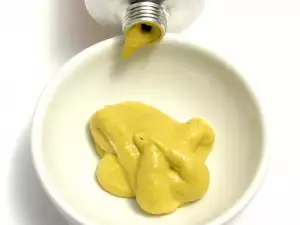
There is evidence that mustard seed is good for women who want to conceive because it increases fertility. Mustard compresses on the forehead can help with headaches and a decoction of mustard seeds consumed several times a day over a period of 20 days, will help you deal with depression and regain your good mood.
If you have sinusitis, smear the area around the nose and temples with mustard every day. This procedure should be used for a few weeks. There is evidence that mustard can relieve asthma and lung inflammation, and help to deal with kidney stones. It also has a beneficial effect on rheumatism and gout. Mustard is proven to improve circulation and has anti-inflammatory and detoxifying effects.
The sauce of the mustard seed is an excellent beauty treatment, having you prepare different masks for your hair and skin. To prepare such a nourishing hair mask with mustard, you need to cut out the soft crust of the rye bread first.
Soak it in hot water and stir until a paste. To add 1 tablespoon of almond oil, 1 tsp honey, 1 tsp mustard and 1 egg yolk. Everything is mixed well and applied to the roots of the hair and scalp. Cover head with a cloth and leave for about 1 hour and 15 minutes. Then wash hair thoroughly with a mild shampoo.
Dangers of mustard
Facials carry some risks if too much mustard is used. There may be an allergic reaction, difficulty breathing, and in some cases even loss of consciousness. Regular consumption of mustard and mustard products is not recommended for people with stomach ulcers, allergies, kidney problems and varicose veins .
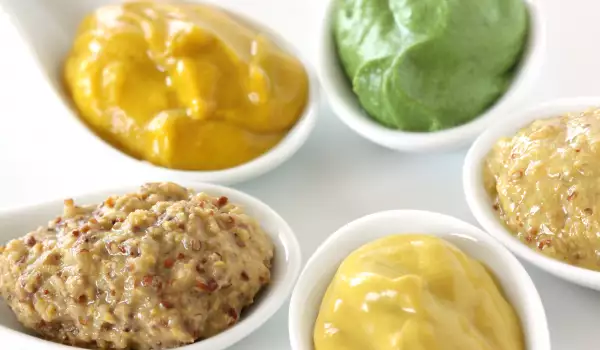
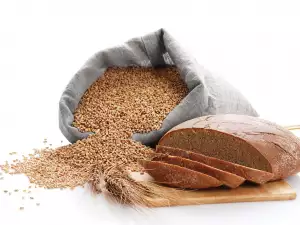
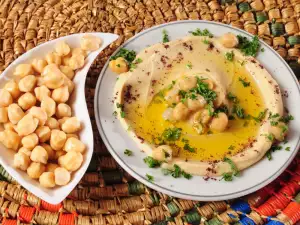
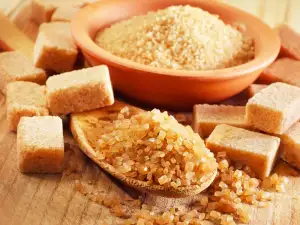



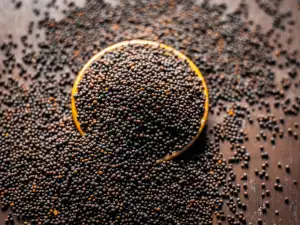
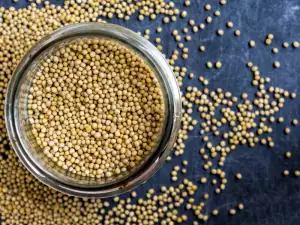

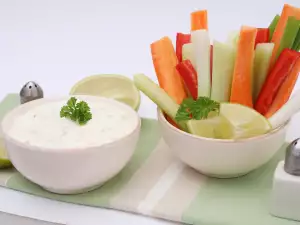
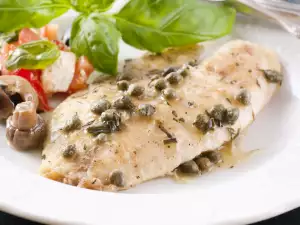

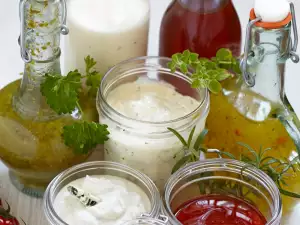
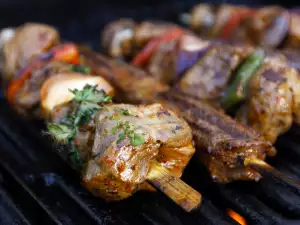




Comments